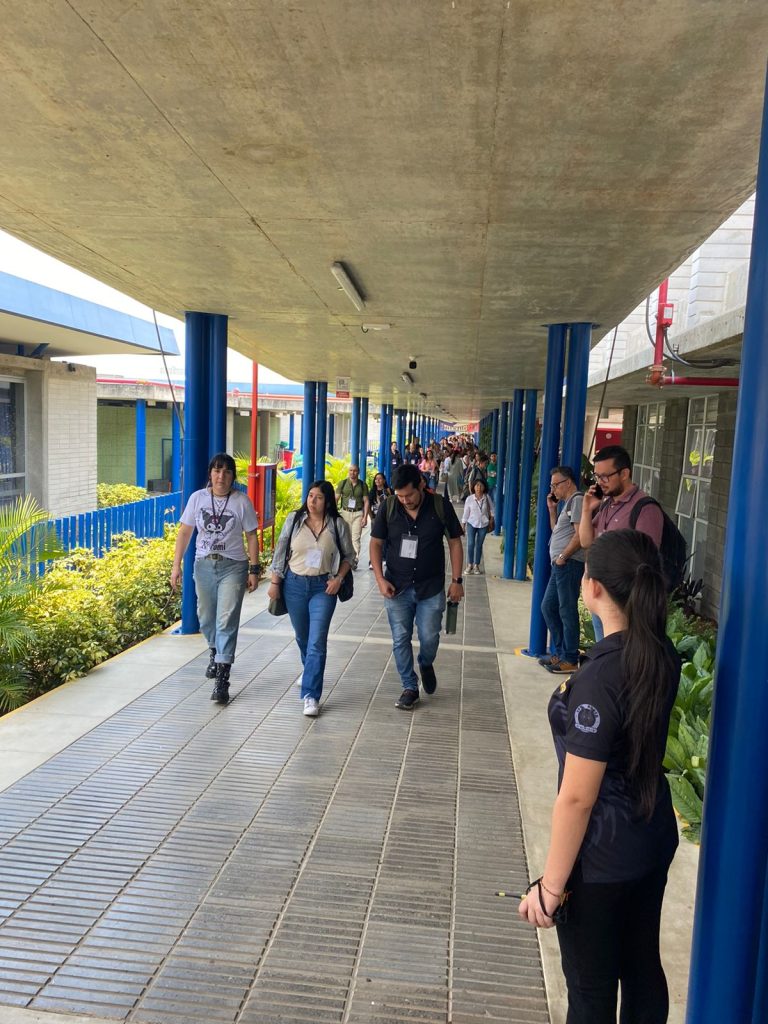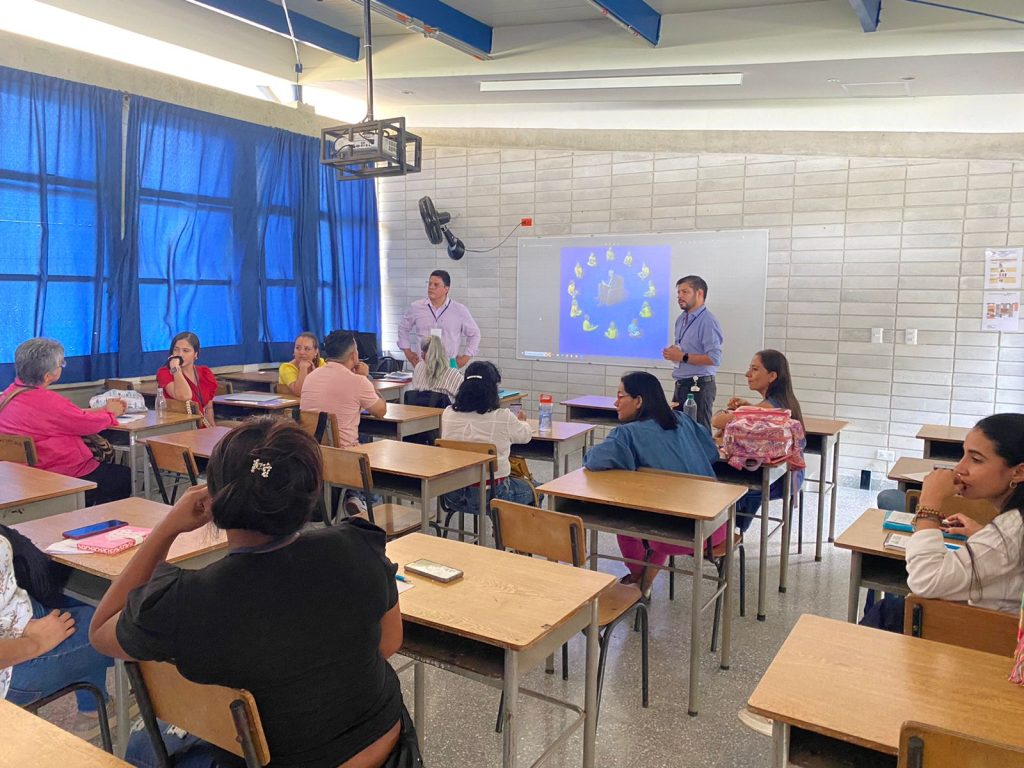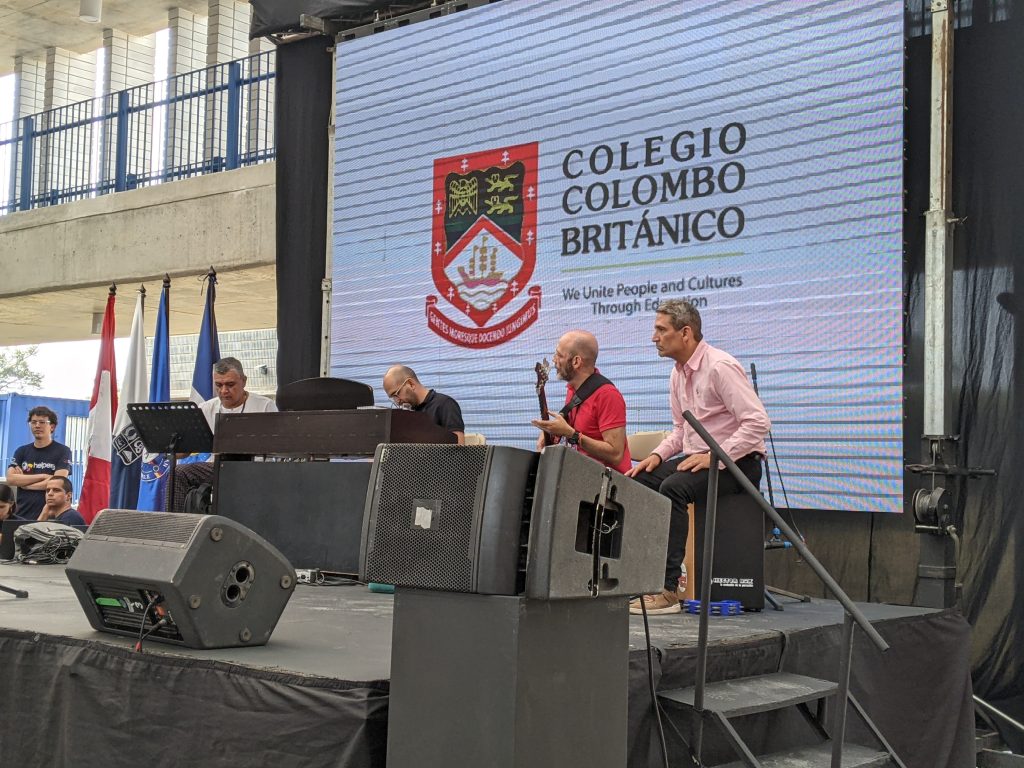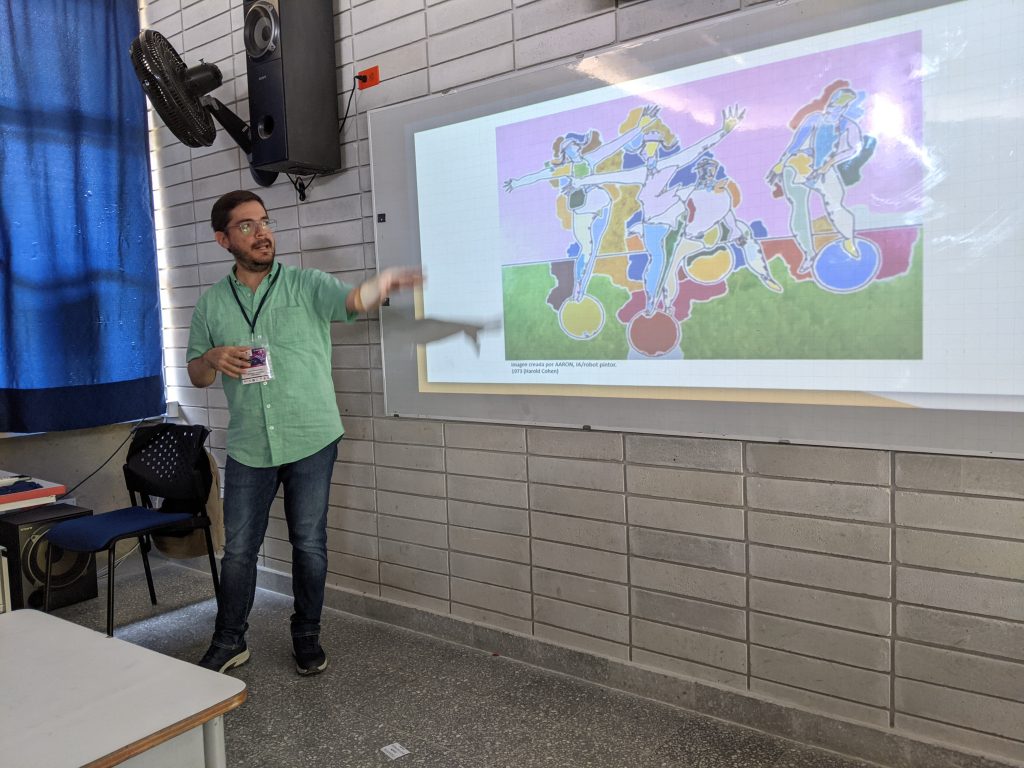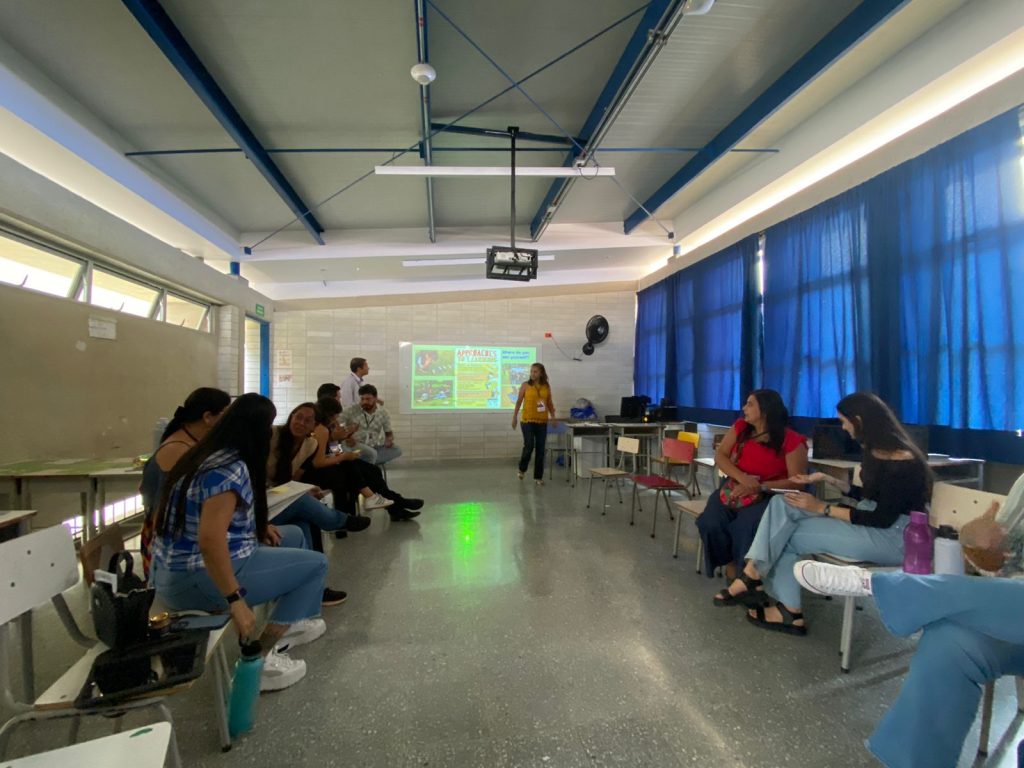-English-
The annual ASOBILCA conference took place on Saturday, September 30th, at the campus of Liceo Francés Paul Valery. This 3rd teachers’ meeting focused on the role of artificial intelligence in education, led by teachers from associated schools through workshops and conferences.
It is true that the rise of new technologies, particularly artificial intelligence, brings countless questions to the table about how to approach them. However, it is an undeniable reality, one that is better embraced than denied. Learning to use these tools is turning a threat into an opportunity and a perceived weakness into strength. Some of our teachers shared with CCB News their experience during the event and their opinions on the subject.
“I attended a couple of workshops that focused on images, but there were proposals in terms of language, evaluation, and how to work in the classroom with something that is a reality. I think the objective, which was to put this on the table, was fulfilled very well: to stop fearing it and, instead, to understand and accept it as just another thing that has happened in technology, a human modification. We have to understand its place and ours as a school, which is to incorporate it into the lives of the students,” shared 5th Grade teacher and coordinator, Ricardo Quintero.
Among the topics addressed by our teachers were the development of skills through the integration of technological tools and resources, presented by Maritza Pérez and Miguel Vargas; AI in visual arts by Maria Fernanda Valencia and Laura Hernández Suaza; effective projects with ICT by Yeni García Ocampo; Artificial intelligence and writing, by Luis Gabriel Rodríguez and Robert Antonio Velasco.
CCB’s secondary arts teacher, David Morán, from his perspective and profession focused his workshop on using artificial intelligence to generate images and its relationship with the history of the image. A practical exercise followed. He commented that his experience with the ASOBILCA workshops was very positive as both a speaker and a participant. For him and his colleagues, discussing artificial intelligence and the possibilities it offers in the educational field is of great interest.
“These are tools that need to be further explored, worked on, and refined. They are also things that cannot be avoided. Younger generations increasingly know how to handle these devices and media, so if we as adults, who are not part of these generations growing up in digital environments, do not keep ourselves in the loop, we fall behind. It is important that students, from an educational standpoint, have knowledge about handling these image-generating tools and applications,” he concluded.
-Español-
El pasado sábado 30 de septiembre se llevó a cabo la conferencia anual de ASOBILCA, la cual tuvo lugar en las instalaciones del Liceo Francés Paul Valery. Este 3er encuentro de profesores abordó como tema principal la inteligencia artificial en la educación a cargo de los profesores talleristas pertenecientes a los colegios asociados.
Es verdad que, el auge de las nuevas tecnologías, y en este caso, de las inteligencias artificiales, causan un sin fin de interrogantes sobre cómo afrontarlas. Sin embargo, es una realidad inevitable, de la cual es mejor apropiarse que negarse. Aprender a usar las herramientas, es sin duda, convertir una amenaza en oportunidad y una debilidad en fortaleza. Algunos de los profesores contaron a CCB News cómo se desarrollaron estos múltiples cuestionamientos.
“Yo estuve en un par de talleres que trabajaban sobre la imagen, pero había propuestas en términos de lenguaje, en términos de la evaluación, de cómo trabajar en el aula una cosa que es una realidad. Me parece que se cumplió muy bien el cometido que era poner esto sobre la mesa; dejar de temerle y más bien conocer y poder asumirlo como cualquier otra cosa que ha sucedido en la tecnología, que es cualquier modificación humana,(…) hay que entender cuál es su lugar y el de nosotros como escuela que es darle cabida en la vida de los chicos”. Compartió el profesor Ricardo Quintero, acerca de su experiencia en la jornada de conferencias.
Dentro de los temas abordados por los profesores se habló sobre el desarrollo de habilidades a través de la integración de herramientas y recursos tecnológicos, a cargo de Maritza Pérez y Miguel Vargas; IA en las artes visuales por Laura Hernandez Suaza y Maria Fernanda Valencia, proyecto efectivo con las TIC por Yeni García Ocampo, inteligencias artificiales y escritura: una didáctica del error, por Luis Gabriel Rodríguez y Robert Antonio Velasco
David Morán, desde su perspectiva y profesión ligada a las artes, enfocó su taller en el uso de la inteligencia artificial para generar imágenes y su relación con la historia de la imagen. Posteriormente, se realizó un ejercicio práctico. Comentó que su experiencia con los talleres de ASOBILCA fue muy positiva como tallerista y participante. Pues, es de gran interés para él y sus colegas tener espacios de discusión que hablen sobre la inteligencia artificial y las posibilidades que se pueden encontrar en el ámbito educativo.
“Son herramientas que hay que seguir explorando, trabajando y puliendo. Además de ser cosas que no se pueden evitar. Las generaciones más jóvenes saben manejar estos dispositivos y medios cada vez más, entonces si nosotros como adultos que no hacemos parte de estas generaciones que crecen en ambientes digitales, no nos actualizamos, vamos quedando atrás. Es importante que los estudiantes, desde la educación, tengan un conocimiento sobre el manejo de estos medios y aplicaciones generadoras de imágenes, etc”. Concluyó.

